- Home
- TV History
- Network Studios History
- Cameras
- Archives
- Viewseum
- About / Comments
Skip to content
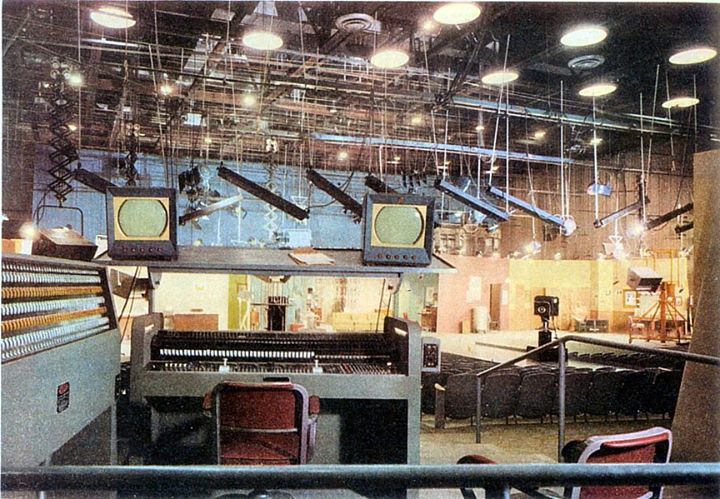



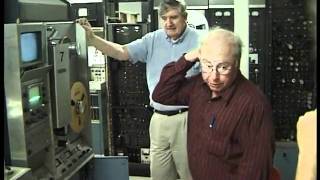

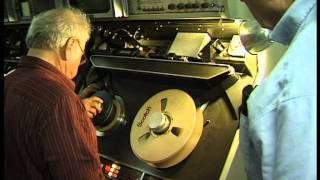

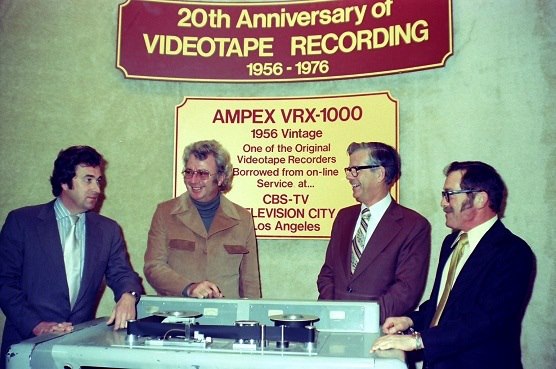

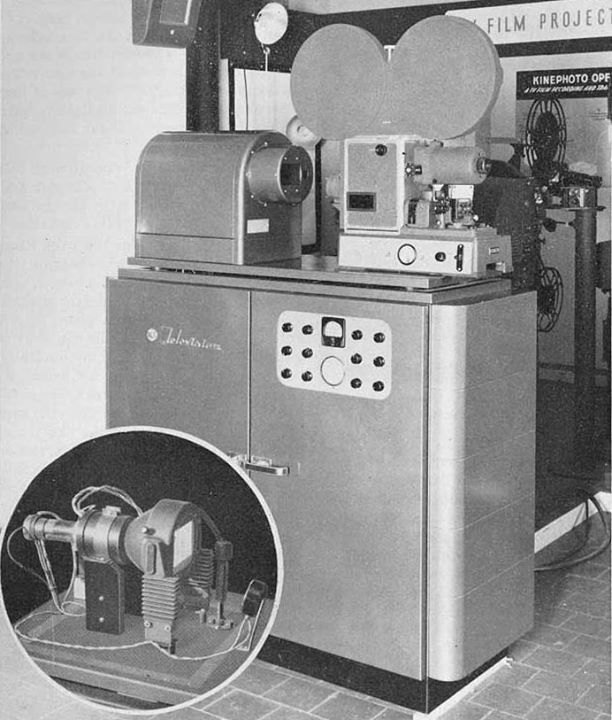

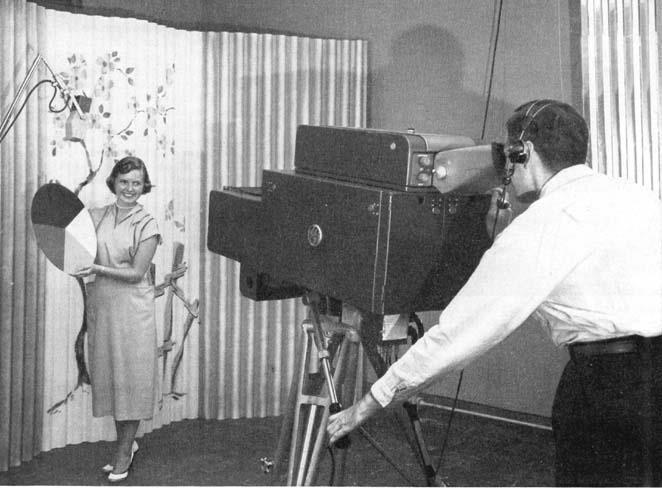

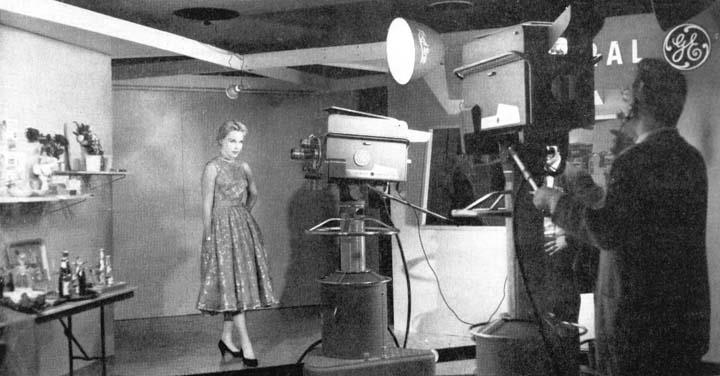



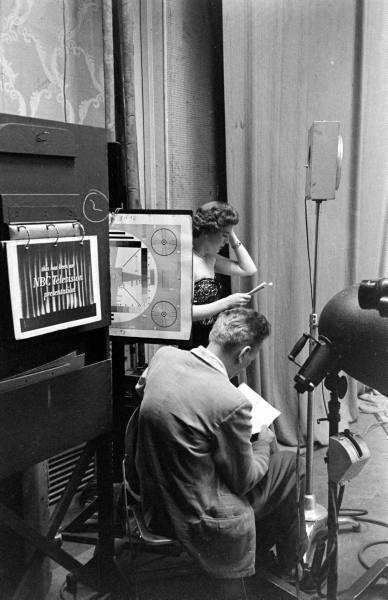

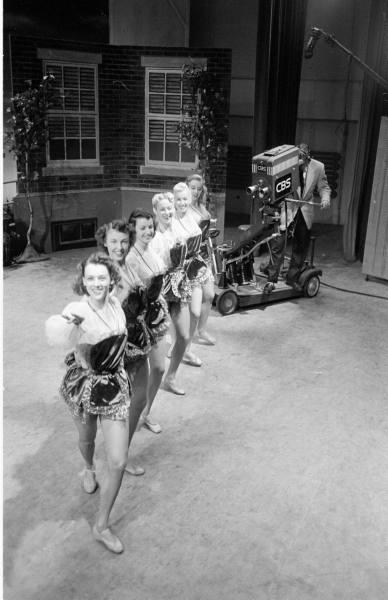

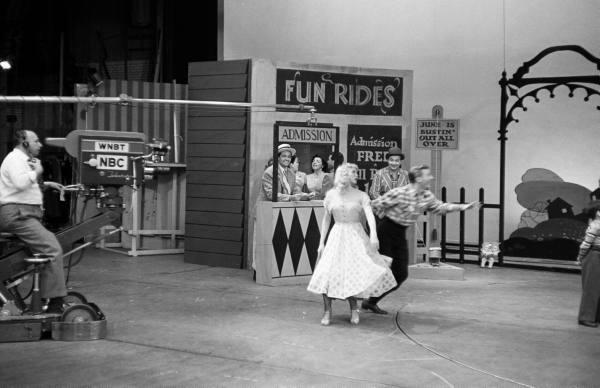

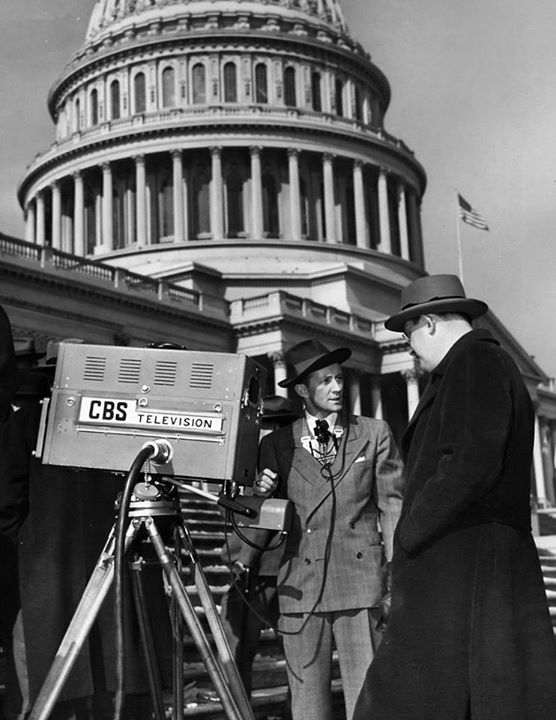

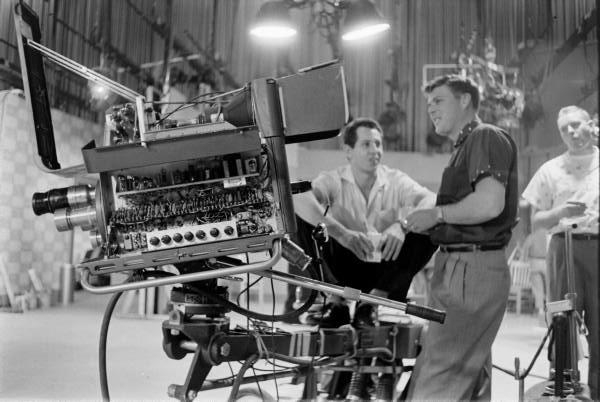

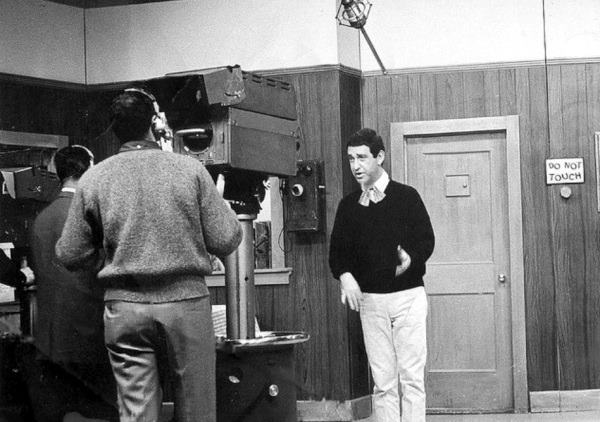

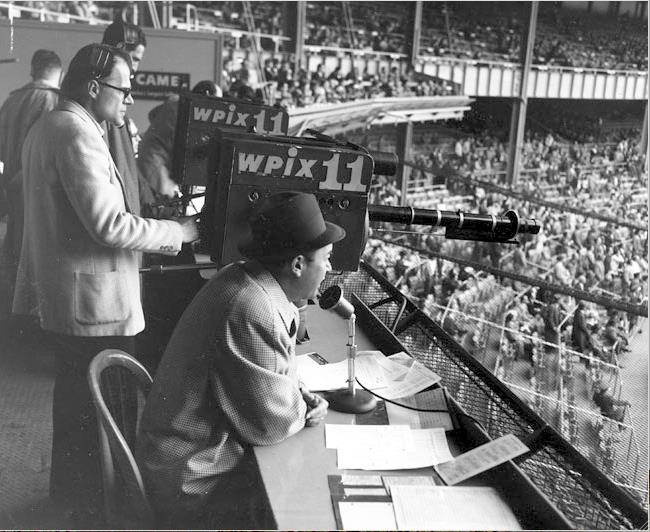



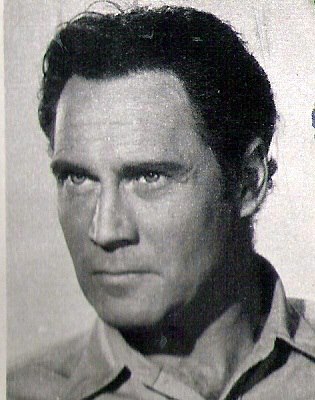



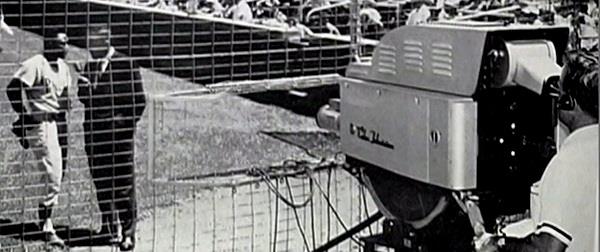

Posts in Category: TV History
Page 129 of 136
« Previous
1
2
3
4
5
6
7
8
9
10
11
12
13
14
15
16
17
18
19
20
21
22
23
24
25
26
27
28
29
30
31
32
33
34
35
36
37
38
39
40
41
42
43
44
45
46
47
48
49
50
51
52
53
54
55
56
57
58
59
60
61
62
63
64
65
66
67
68
69
70
71
72
73
74
75
76
77
78
79
80
81
82
83
84
85
86
87
88
89
90
91
92
93
94
95
96
97
98
99
100
101
102
103
104
105
106
107
108
109
110
111
112
113
114
115
116
117
118
119
120
121
122
123
124
125
126
127
128
129
130
131
132
133
134
135
136
Next » A Rare Color Photo of CBS Television City Studio 33
On October 9, 2012
- TV History
A Rare Color Photo of CBS Television City Studio 33
Perhaps the most famous of the TVC studios is 33. This is the only one left that has the side wings and the built in theater seating. Here is a shot from behind the lighting directors console from around 1953.
As mentioned in the post just before this, the dynamics of production changed as with this much space, you could have horizontal production with the cameras and crew moving from side to side on stage instead of operating in a maze of set walls as was necessary in most NYC productions. I think this set is either ‘My Friend Irma’ or ‘My Favorite Husband’.
You can’t see the wings, but you can see how far the center ramp comes out into the audience. Studio 31 was originally a mirror image of 33…the only difference was that in 31, the lighting board was on the other side of the control room which we see the corner of at the far right in this photo. Enjoy and share! -Bobby Ellerbee


Museum Of Broadcast Technology: Camera Floor
On October 6, 2012
- TV History, Viewseum
This is a short but sweet video from the Museum Of Broadcast Technology near Boston. Great look at a few of over100 cameras that are on display there in Woonsocket, R.I.
Most of MBT’s cameras and 60+ VTRs will be operative. Tom Sprague, Paul Beck, Jay Ballard and Pete Fasciani have been working on this project for years and the dream is closer than ever to being realized.


Museum Of Broadcast Technology: Tape Room 1
On October 5, 2012
- TV History, Viewseum
Museum Of Broadcast Technology: Tape Room 1
When I began to collect cameras in 2004, Chuck Pharis introduced me to Paul Beck and Tom Sprague. Tom was just beginning to create the Museum Of Broadcast Technology in Wonsocket, RI., and with the help of Paul, Jay Ballard, Pete Fasciano (inventor of Avid) and Mark Berman, Tom has put together an unbelievable collection of television technology.
I am proud to have located about 6 of these 40+ quad machines for them and they have been a great help to me with cameras, of which they now have nearly 70.
A partial list of restored VTRs included the RCA TR-70B, TR-60, TR-600 and a revamped AMPEX VR-1000B with VR-1200 electronics. Other VTRs featured in this video are RCA TRT-2, RCA TCR-100, RCA TR-22, AMPEX VR-1200, AVR-2 and AVR-3.


Museum Of Broadcast Technology: Tape Room 2
On October 3, 2012
- TV History, Viewseum
Museum Of Broadcast Technology: Tape Room 2
In this video, we see the attempt to playback a Boston kids show tape from the ’60s. Once the tape plays, check out the action on the show…it’s great. Again, this shows my good friends Paul Beck, Jay Ballard and Mark Berman in room full of restored quad machines.
AMPEX GIANTS AND THEIR GIANT INVENTION
On October 3, 2012
- TV History
In this 1976 photo, Ray Dolby and other Ampex engineers are shown with a VRX 1000 borrowed from CBS for this event at Ampex headquarters. The machine came from Television City and was the first one used in the west coast. It’s first task was to record and playback on delay the Evening News with Douglas Edwards. The machine stayed in service till it was retired in 1980. I think Dolby is in the red jacket, but I’m not sure. If you know the other men in the photo, please fill us in on who they are.
The RCA Kinescope Machine
On October 2, 2012
- TV History
The RCA Kinescope Machine
September 13, 1947 — Kodak and NBC develop ‘kinescopes’, which use special film cameras to shoot directly off a TV screen. This permits the recording and later distribution of live shows for sale, or archiving.
The Kinescope dominated TV recording for time delay in the early 1950’s. A Kinescope recorder was basically a special 16mm or 35mm film camera mounted in a large box aimed at a high quality monochrome video monitor. All things considered the Kinescope made high quality and respectable TV recordings.
The Kinescope was quite the clever device. It’s film camera ran at a speed of 24 fps. Because the TV image repeated at 60 fields interlaced (30 fps) the film had to move intermittantly between video frames and then be rock steady during exposure. The pull-down period for the film frame was during the vertical interval of less than 2ms, which was something no mechanical contraption could do at the time. Several manufacturers like RCA, Acme, General Precision, and Eastman Kodak found various ways around the problem by creating a novel shutter system that used an extra six frames of the 30 frame video signal to move the film. This action integrated the video half-images into what seemed like smooth 24fps film pictures. Of course, the kines were played back on air using film chains running at 24fps so the conversion to film was complete and seamless. Until videotape recorders made their debut, the Kinescope was the only way to transmit delayed television programs that were produced live.
The Original GE Color Prototype Camera, Dot Sequential
On September 28, 2012
- TV History
The Original GE Color Prototype Camera
This looks a lot like the early RCA color prototypes, but it came later and was crafted from photos and demonstration broadcasts the GE engineers had seen. Although RCA was leading the way in Dot Sequential color, GE began to edge into the color field after the FCC chose RCA’s method over the CBS color wheel.
GE, Second Prototype Color Test, Field Sequential
On September 28, 2012
- TV History
GE, Second Prototype Color Test
The camera closest to us, with the operator standing, is a GE color camera prototype, using the CBS developed field sequential – color wheel system that could be added to image orthicon monochrome cameras. The far camera is a regular B/W GE camera. This photo is from around 1956 or 57 and predates the first color camera from GE, the PC 15. In this test they were comparing the color resolution against the B/W camera resolution on B/W monitors to make sure the signal was acceptable on non color home receivers.
Happy Anniversary 60 Minutes!
On September 24, 2012
- TV History
On September 24, 1968, Television’s longest running news magazine program debuted. The show was created and produced by Don Hewitt who started as the director of ‘Douglas Edwards With The News’ and ‘See It Now’ with Edward R. Murrow. Hewitt also produced the Kennedy – Nixon Debates and was Executive Producer of The CBS Evening News with Walter Cronkite.
Always Handy
On September 24, 2012
- TV History
Always Handy
Flip cards and camera alignment chats were always close at hand in the early days like in this 1949 shot from NBC. Do you know why?
Ed Sullivan’s ‘Toastettes”
On September 24, 2012
- TV History
May 1951: Ed Sullivan’s ‘Toast Of The Town’
When the show debuted in 1948, six of June Taylor’s dancers were chosen to dance at the top of the show. They were called ‘The Toastettes’ and were on almost every show open, till it became ‘The Ed Sullivan Show’ in 1955.
1951: Colgate Comedy Hour…Notice turntable in the stage
On September 21, 2012
- TV History
1951: Colgate Comedy Hour
Great shot! Notice turntable in the stage and how big the set is. In the early days, before the studios were consolidated, all the networks had theaters they shot in all over NYC and LA. This was in The Center Theater, across from NBC. Finally, a cameraman gets to actually sit on the swing out seat on the Panoram dolly. Usually, they had to climb all over it to see into the viewfinder and get their shots.
RCA Orthicon Camera, WTOP Washington
On September 21, 2012
- TV History
RCA Orthicon Camera, WTOP Washington
A couple of days ago, Val Ginter in NYC asked about the Orthicon cameras. I suspect they came out around 1942-43 and there were not very many as RCA knew the Image Orthicon development was coming along nicely, and would replace these once the war ended. Notice the ‘elaborate’ camera art covering the RCA branding.
How Hot Is It? Pretty Hot!
On September 18, 2012
- TV History
How Hot Is It? Pretty Hot!
It’s not often that you see a TK11 opened up like this, but this one on the set of Art Linkletter’s House Party at Television City needs to breathe. Unlike cameras at the local stations, network cameras work for hours on end in rehearsals and in production and the heat from the tubes caused setting to drift and viewfinders to go blank.
Soupy Sales: 1964 WNEW
On September 18, 2012
- TV History
Soupy Sales: 1964 WNEW
Even though WNEW was the old Dumont owned WABD, it’s still odd to see these old Dumont cameras in use on the ‘new’ Soupy show. The show started in Detroit at WXYZ in ’53 and began to air on ABC in 59. In ’60 Sales moved to KABC and after ABC canceled the show in ’63, he moved to WNEW where he did the show till ’66 and those 260 shows are the ones in syndication.
“Ovary Soap” The Flub That Helped Mel Allen Get “The” Job
On September 17, 2012
- TV History
“Ovary Soap”
Believe it or not, that’s the line that helped Mel Allan become the Voice Of The Yankees. Mel’s big break came in 1939 when Garnett Marks, Arch McDonald’s partner on Yankee broadcasts, twice referred to Ivory soap, the Yankees’ sponsor at the time, as “Ovary Soap.” He was fired, and Allen was tapped to replace him. McDonald himself went back to Washington after only one season, and Allen became the Yankees’ and Giants’ lead announcer. Allen was able to do double duty for both teams because only the home games were being broadcast.
Mae Questel, The voice of Betty Boop AND Olive Oyl! …
On September 16, 2012
- TV History
Can You Guess Who: ANSWER…Mae Questel
The voice of Betty Boop AND Olive Oyl!
Thanks Mae for the great work! Enjoy!
AT LAST! The Lone Ranger, Unmasked…
On September 16, 2012
- TV History
AT LAST! The Lone Ranger, Unmasked…
If you were like me, you always wondered what Clayton Moore looked like without the famous Lone Ranger mask. Now we know.
Braves Baseball On TBS…Gone But Not Forgotten
On September 16, 2012
- TV History
Braves Baseball On TBS…
Gone but not forgotten. In 2007, after a 32 year run on Superstation WTBS, the Atlanta Braves lost their national cable audience leaving WGN as the only super station to televise their home teams to a national audience on a regular basis. For more, and a memorable list of Braves announcers including Pete Van Wieren, Skip Carry and Ernie Johnson, click the link.
http://en.wikipedia.org/wiki/Braves_TBS_Baseball
WGN: Chicago Sports Pioneer
On September 15, 2012
- TV History
WGN: Chicago
In 1960, between the Cubs and White Sox, WGN televised 120 baseball games with 8 RCA TK41s. For attendance reasons, I’m sure both teams tried not to be home at the same time, but when it happened, 4 cameras went to Cominskey Park and 4 went to Wrigley Field.
WGN Television, whose call letters are derived from the Chicago Tribune’s first slogan, “World’s Greatest Newspaper”, hit the airwaves on April 5, 1948 on Channel 9 in Chicago from its studios at Tribune Tower. Colonel Robert McCormick led the Tribune Company into the TV era, believing that “in television, we have embarked upon another of America’s adventures.”
In addition to carrying Chicago Cubs and White Sox baseball games in the 1950s, WGN-TV made its first attempts at producing entertainment series to air on the station while also distributing them to TV stations across the country. Although initially an affiliate of the DuMont and CBS television networks, WGN-TV realized it could better serve the Chicago area audience as an independent station. By 1957, WGN became one of the first local television stations to offer a full schedule of live programs in color. One year later, the station had scored many firsts, including the first televised appearance of President Truman in Chicago as well as mobile coverage of General MacArthur’s visit to the city.
In 1961, WGN-TV began broadcasting from new facilities at 2501 West Bradley Place on Chicago’s northwest side and premiered its own version of “Bozo’s Circus”, which became the most popular and successful locally produced children’s series in the history of television. Also in the 1960s, WGN expanded its “10th Hour News” newscast to a half-hour (the first Chicago TV station to do so), produced programs such as “Garfield Goose and Friends” and “Ray Rayner and His Friends,” sports telecasts that included Chicago Blackhawks hockey and Chicago Bulls basketball, and developed a vast movie library that was featured on a number of showcases such as “Family Classics.” In 1966, the Chicago Chapter of the National Academy of Television Arts and Sciences Board of Directors awarded Ward Quaal, then President of WGN Continental Broadcasting Company, the Governors’ Award “for developing the finest independent TV station in the U.S.”
Page 129 of 136
« Previous
1
2
3
4
5
6
7
8
9
10
11
12
13
14
15
16
17
18
19
20
21
22
23
24
25
26
27
28
29
30
31
32
33
34
35
36
37
38
39
40
41
42
43
44
45
46
47
48
49
50
51
52
53
54
55
56
57
58
59
60
61
62
63
64
65
66
67
68
69
70
71
72
73
74
75
76
77
78
79
80
81
82
83
84
85
86
87
88
89
90
91
92
93
94
95
96
97
98
99
100
101
102
103
104
105
106
107
108
109
110
111
112
113
114
115
116
117
118
119
120
121
122
123
124
125
126
127
128
129
130
131
132
133
134
135
136
Next »